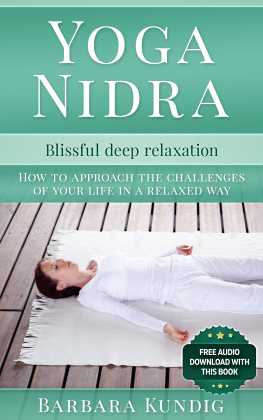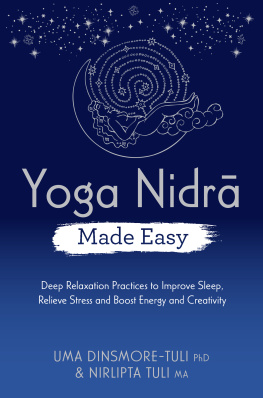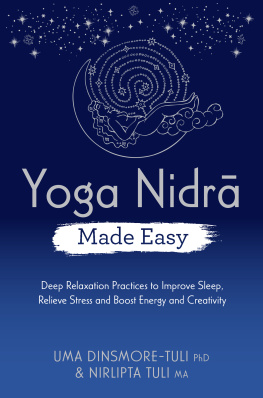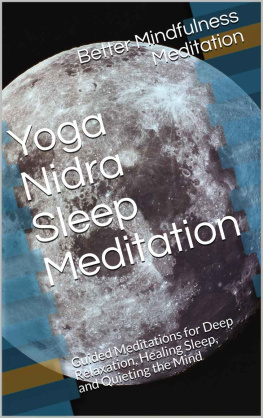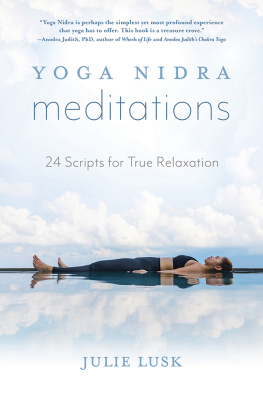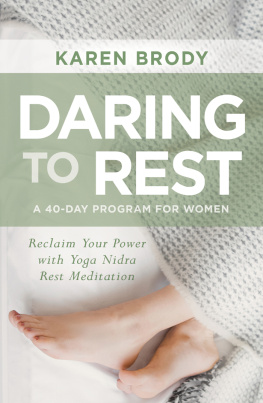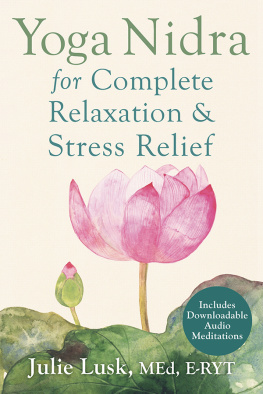Copyright 2019 by Rockridge Press, Emeryville, California
No part of this publication may be reproduced, stored in a retrieval system or transmitted in any form or by any means, electronic, mechanical, photocopying, recording, scanning or otherwise, except as permitted under Sections 107 or 108 of the 1976 United States Copyright Act, without the prior written permission of the Publisher. Requests to the Publisher for permission should be addressed to the Permissions Department, Rockridge Press, 6005 Shellmound Street, Suite 175, Emeryville, CA 94608.
Limit of Liability/Disclaimer of Warranty: The Publisher and the author make no representations or warranties with respect to the accuracy or completeness of the contents of this work and specifically disclaim all warranties, including without limitation warranties of fitness for a particular purpose. No warranty may be created or extended by sales or promotional materials. The advice and strategies contained herein may not be suitable for every situation. This work is sold with the understanding that the Publisher is not engaged in rendering medical, legal, or other professional advice or services. If professional assistance is required, the services of a competent professional person should be sought. Neither the Publisher nor the author shall be liable for damages arising herefrom. The fact that an individual, organization, or website is referred to in this work as a citation and/or potential source of further information does not mean that the author or the Publisher endorses the information the individual, organization, or website may provide or recommendations they/it may make. Further, readers should be aware that Internet websites listed in this work may have changed or disappeared between when this work was written and when it is read.
For general information on our other products and services or to obtain technical support, please contact our Customer Care Department within the U.S. at (866) 744-2665, or outside the U.S. at (510) 253-0500.
Rockridge Press publishes its books in a variety of electronic and print formats. Some content that appears in print may not be available in electronic books, and vice versa.
TRADEMARKS: Rockridge Press and the Rockridge Press logo are trademarks or registered trademarks of Callisto Media Inc. and/or its affiliates, in the United States and other countries, and may not be used without written permission. All other trademarks are the property of their respective owners. Rockridge Press is not associated with any product or vendor mentioned in this book.
Interior and Designer: Tricia Jang
Photo Art Director/Art Manager: Hillary Frileck
Editor: Lauren Ladoceour
Production Editor: Ashley Polikoff
Production Manager: Riley Hoffman
Photography: Alex Adams
ISBN: Print 978-1-64611-028-5 | eBook 978-1-64611-029-2
R0
To all my teachers, especially
SENECA, ELIO, AND LIAM,
where love is everything
and everything is YES.
Contents
Im so happy youve found Practical Yoga Nidra. Thank you for beginning this journey with me. This book is a product of more than a decade of study, practice, and teaching Yoga Nidra. This ancient practice is experiencing a renaissance today, and its catching on all over the world. This book is designed to help you understand what Yoga Nidra is and give you an easy-to-follow, 10-step guide to the practice that you can start using right now to help you reduce stress, improve sleep, and restore your spirit.
The practice of Yoga Nidra is simply about being present and aware. It differs from most meditation styles with its emphasis on relaxation. The roots of Yoga Nidra date back to 700 to 1,000 BCE in India, and over the centuries its teachings have expanded from a dualist philosophy (things being either/or) to a non-dualist philosophy (things being both/and), which youll come to understand as you read on.
During my very first Yoga Nidra experience, I asked myself this essential question: So what? What does this ancient practice mean to the modern person who wakes up every day, gets their kids off to school, and zips off to work with a piece of toast in hand? It took many years of asking this question to find an answer, but along the way, Ive learned how Yoga Nidra can be a beautiful and fascinating method of self-discovery and that it can be very practical in the twenty-first century, just as it was thousands of years ago. It helps us solve the same essential human problem: feeling separate from Source (aka the Universe, God, or Creation). For me, Yoga Nidra has been the most helpful, profound, and relaxing method for facilitating reunificationthat yoking with my essential being. Im ecstatic to share my experience and knowledge with you in a way thats easy to understand and practice.
For many years Ive been teaching Yoga Nidra and have helped people practice reconnecting with their essential being, their True Self. Hopefully this book will demystify the practice of Yoga Nidra and help you use this powerful tool in a way that is practical and real for you without dumbing it down or denigrating its tradition. In fact, I believe that the power of yoga and Yoga Nidra in part lies in the fact that they are adaptable to the needs of the person who practices them, whether thats in the year 20 BCE or 2020 CE.
Because Yoga Nidra is the practice of learning to engage with our ultimate being, youll notice that superlative concepts are often designated with capital letters to emphasize their spiritual or magnanimous quality. So expect to see capitalized words and phrases like True Self, True Nature, Beingness, Awareness, Both/And nature, Source, and Self throughout this book. All these words are emphasized in a way that helps designate them as the eternal part of our being.
I invite you to be open to the teachings of this book. I believe these simple steps have the potential to change your life for the better and ultimately help you become a more whole, complete, and happy version of yourself. My sincere desire is that through these 10 steps, you uncover what was there all along: your limitless, loving, and whole True Self.
TAP INTO THE POWER OF YOGA NIDRA
What Is Yoga Nidra?
Yoga Nidra means the yoga of sleep, but dont let the name fool you. In truth, this ancient practice is more about learning to wake up. Nidra refers to that daydream state between wakefulness and sleep. Think of the paradox of sleeping wakefulness as a bridge between otherwise disparate elements, such as consciousness and unconsciousness, spirit and form, and the ego-self and the True Self.
Yoga Nidra is essentially a guided meditation during which the practitioner usually lies down, closes their eyes, and becomes very relaxed as they are guided by a facilitator into deeper and deeper layers of relaxed Awareness. By recording the scripts in this book and playing them back, you will be both the facilitator and the practitioner.
A Yoga Nidra practice often lasts between 10 and 45 minutes, during which time the facilitator guides the practitioner systematically into a focused but neutral observation of the five koshas (or sheaths, which you can think of as layers over your True Self). These are the objects of the ego as well as physical sensations, thoughts, and emotions. The methods aim is to help you learn to stop identifying with the ego-self by peeling back the koshas like layers of skin off an onion and instead identify with the core of your True Naturepure Awareness. Its like napping your way to enlightenment!
While not everyone emerges from every practice having seen the light, its incredible how many people report experiencing massive benefits, even after their first session. Rather than tell my students the benefits of the practice, I allow the practice to speak for itself. I typically start a Yoga Nidra class by asking return students how they benefit from the practice. Eager hands shoot into the air as students happily report a wide array of benefits, including lowered stress, being less reactive, greater happiness, better sleep, lowered blood pressure, less anxiety and depression, more energy, accelerated learning, increased creativity, higher performance and productivity, general well-being, better digestion, greater optimism, spiritual insight, confidence, and a grounded sense of purpose, clarity, and optimism.








